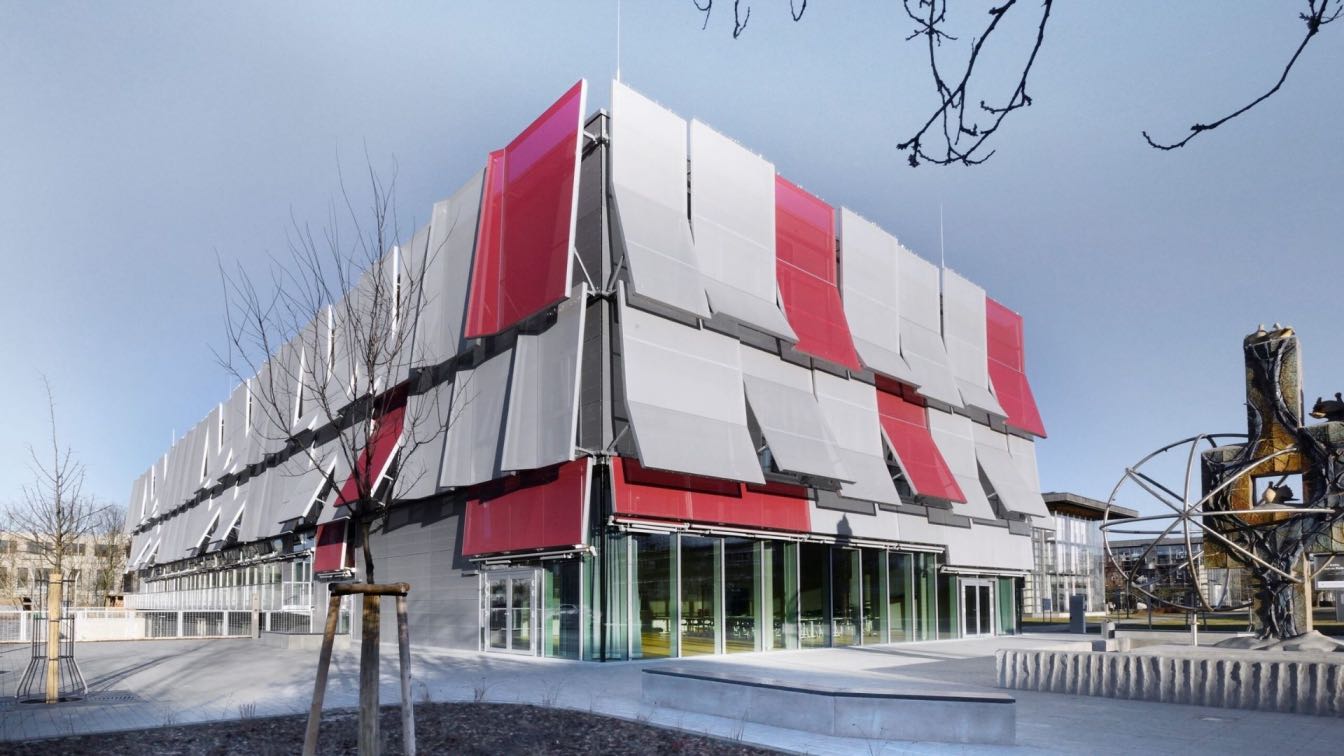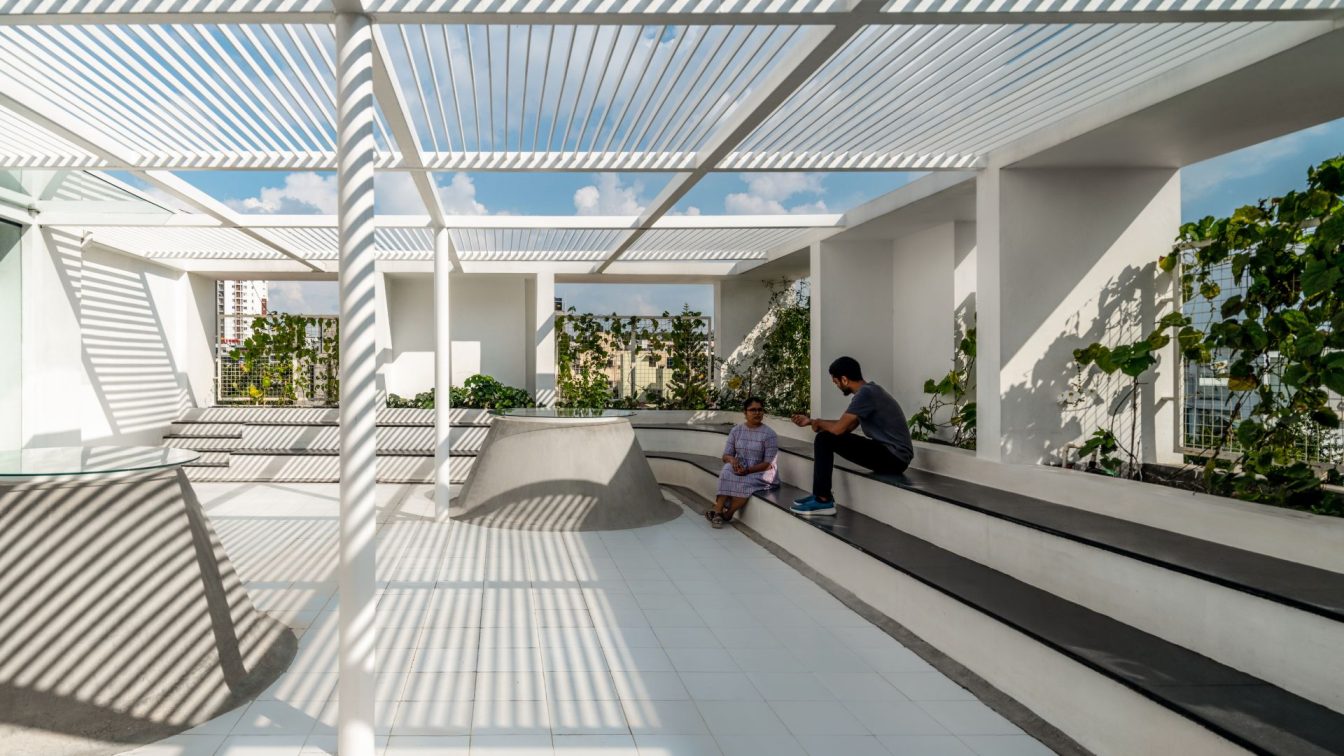SCAD: Recreate Xiao River and Xiang River, Recall Chinese Academy Heritage
1. Project overview
Changsha International Conference Center is situated in the High-speed Railway New Town of Changsha City, overlooking Changshanan Railway Station across a river, and adjacent to Changsha International Convention and Exhibition Center to its south. The project covers a land area of about 212,700 square meters and a gross floor area of around 170,000 square meters, of which the above-ground space occupies 136,000 square meters, while the underground section spans 44,000 square meters. The building measures approximately 300 meters from north to south, 150 meters from east to west, and has a height of 46.8 meters. It consists of three floors above ground and one underground floor.
The conference center has 60 conference halls and rooms capable of accommodating up to 10,500 people. It includes a main venue that features a column-free space spanning about 7,800 square meters, a roundtable conference hall covering about 1,800 square meters, a banquet hall encompassing about 3,400 square meters, and a roof garden spanning 6,000 square meters. It stands as the largest conference center in central China.
2. Design concept
Form
Chinese academy, embody the refined and profound Chinese culture
The formal design draws on traditional Chinese aesthetics and cultural symbols in an abstract manner. It strategically integrates natural, architectural and cultural elements, such as the contours of mountains, traditional sloped roofs, and the pattern of unfolded Chinese folding fans, to comprehensively interpret the connotation of Chinese culture, which highlights the harmonious coexistence of human social civilization and the natural environment, as well as the unity of nature and man. The design aims to inherit and develop the core values of Chinese traditional culture and reshape the nation's cultural confidence.
Chinese culture and art emphasize three essential elements: form, soul, and qi (energy), with "qi" being the most significant. The axial sequences found in ancient Chinese buildings encapsulate a sense of ritual, representing the spiritual essence of Chinese culture while exuding grandeur. Accordingly, a spatial sequence of "front square - waterscape – welcoming entrance - ceremonial square" is arranged at the west main entrance square. With an appropriate scale, these four nodes conjure a solemn and majestic atmosphere for visitors, imbuing the space with a well-defined sense of order, showcasing the majestic style of a great nation.
Imagery
Xiao River and Xiang River, recreate bamboo slips and rivers of Hunan
The building's facade is inspired by the techniques of Chinese landscape ink paintings and the dynamic scenery described in the local guqin masterpiece on the Xiao River and the Xiang River. It takes on the shape of bamboo slips by incorporating metal folded plates with vertical lines. The parametric design integrates 7,500 perforated metal panels of different lengths, widths, and densities into a 900-meter-long landscape painting-like facade skin. This design emerges against the backdrop of the winding Liuyang River, which highlights the distinctive city identity of Changsha, renowned for its rivers. The angular perforated metal panels with vertical lines function as sunshade components, not only enhancing the rigidity of the metal plates while keeping the facade clean and durable. This avoids the accumulation of dust and dirt often seen in buildings with horizontal stripes, while also enabling adaptation to the rainy weather in Changsha. On cloudy days, the folding surface creates a captivating interplay of light and shades, rendering an effect that evokes ink-wash paintings.
Yuelu Academy stands as a pivotal symbol of Chinese and Hunan cultures. The conference center's roof garden pays homage to the Yuelu Academy, encapsulating its essence through the design of a square courtyard surrounded by corridors. The core of the courtyard features a rest pavilion that takes inspiration from "He Xi Tai" - a pavilion in front of Yuelu Academy. These design elements, along with the undulating gabled walls, create a unique Cloud Academy that carries on the spirit of Yuelu Academy and its legacy of nurturing talents.

Functionality
The largest in central China, build an international multi-functional "urban living room"
Changsha International Conference Center is designed with a distinctive layout that sets it apart from other conference venues. Its layout design is based on the principle of "convention-driven exhibition, flexible division and combination" to accommodate business meetings and government summits. The layout include flexible spaces to adapt to the diverse needs of different conferences, enhancing its utilization rate and economic viability. Since its operation, the conference center has hosted numerous international events, significantly augmenting Changsha's global connectivity and influence.
A large open-air parking lot is set outside the conference center. Based on Sponge City requirements, green design approach is applied to the parking lot. During conferences, it can meet the needs of outdoor parking and exhibition installations. On weekdays, it is open to the public as a park, blending into the daily lives of Changsha citizens and activating the neighborhoods in High-speed Railway New Town.
Strategies
Low-carbon and energy-saving, shape the city as a pioneer in green construction that adapts to the local climate
The project primarily employs passive energy-saving techniques and a comprehensive green building strategy that integrates both active and passive energy-saving measures. It has developed a range of measures that work at three different levels: reducing emissions, increasing sink capacity, and alternative approaches. The ultimate goal is to achieve a zero-carbon building design, significantly cut down operational costs, and fulfill the criteria of 2-star green building standards.

Master Planning
The project has embraced an intensive layout to conserve land and maximize outdoor activity venues. With a 40% green space ratio and the vertical greening of the roof garden, the site can fully absorb the carbon emissions from activities and effectively mitigate the urban heat island effect. Planting a large area of tall trees has improved shaded areas for activity venues and increased the site's carbon sink capacity.
Building layout design
The building's plan utilizes a "layered zoning" strategy to minimize energy consumption during operations. The conference center can be divided into several areas, enabling independent use based on specific requirements. Each area has its own air conditioning and lighting systems that can be controlled independently, preventing resources wastage caused by large interconnected spaces.
Electromechanical system
The project boasts a roof greening rate exceeding 75%, and rainwater is collected and recycled for outdoor use. In addition, solar photovoltaic panels are installed on the roof, while air conditioning and fresh air units are equipped with G4 primary air filters and electrostatic precipitators with ionic fans for air purification. A water-saving micro-sprinkling irrigation system has also been put in place. Moreover, CO2 concentration detection systems have been installed in key indoor and underground spaces.

Facade design
With an east-to-west orientation, the breathable double-layer skin facade is designed with high-performance sunshades crafted from a combination of perforated metal panels and glass curtain walls. The external sunshade coverage ratio reaches as high as 70%. The glass is ultra-clear insulating glass, incorporating an ionic membrane for explosion-proofing, energy-saving, and safety purposes. It has excellent light transmittance, energy efficiency and sound insulation capabilities. Additionally, the glass is integrated with self-cleaning nano-coating technology.
Overall benefits
The project stands as a pivotal construction endeavor in Hunan Province, garnering widespread attention across all walks of life and wielding significant social influence. On October 30, 2020, the Changsha International Conference Center was officially inaugurated. Notably, it meets international two-star green building standards, and erects as the largest conference center in Central China. It will assume a significant role as the permanent main venue for the China-Africa Economic and Trade Expo, offering a new platform for Hunan to build the Pilot Zone of In-depth China-Africa Economic and Trade Cooperation. Moreover, it will contribute to Changsha's vision of establishing a conference and exhibition hub in central China, and strengthen the pivotal leading role of the High-speed Railway Area where it’s located.
Since being put into use, the Changsha International Conference Center has operated efficiently, hosting a myriad of international-level events such as the First BFA Global Economic Development and Security Forum, the Second China-Africa Economic and Trade Expo, and the World Computer Conference, among others. As a large-scale modern public architecture, it stands as a prominent landmark in Changsha City and Hunan Province alike. It serves as a new emblem of the city, significantly enhancing its identity and attractiveness. Moreover, it also contributes to catalyzing commodity circulation, technical exchanges, information communication, and economic and trade cooperation, playing a crucial role in boosting city development and the local economy.










































About
Architectural Design & Research Institute of SCUT Co., Ltd. (SCUTAD), founded in 1953, is one of the earliest Class-A design research institutes established by top universities in China. SCUTAD has been devoted to architectural design practices for over 40 years and has gained a reputation in a wide range of project typologies such as cultural, educational, super high-rise, sports, exhibition, residential, and transportation buildings. Some of the institute's notable works include the China Pavilion at Expo 2010 in Shanghai, the Memorial Hall of the Victims in Nanjing Massacre by Japanese Invaders (Phase III), China(Hainan)Museum of the South China Sea.





